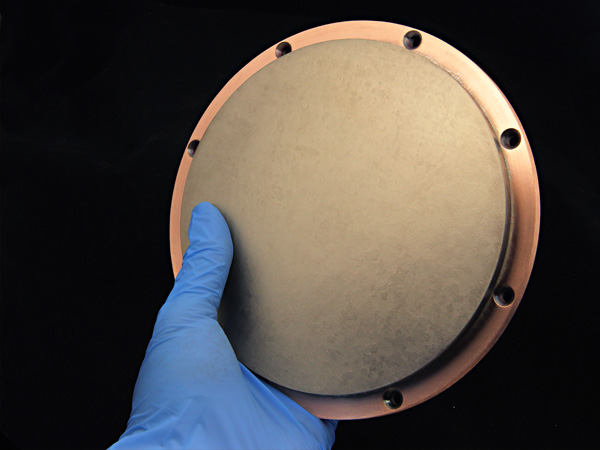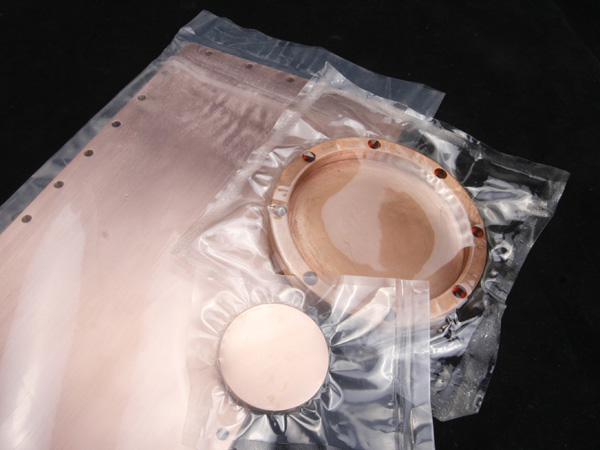Should Bonding Be Applied to Strengthen the targets?
Bonding services reinforce sputtering targets against process damage. Target life directly affects coating consistency and economics. Hence protecting targets from fractures or particles detaching becomes essential. Bonding fuses an interface material onto the target surface. Copper and titanium bonds commonly bolster metal targets, while soldering foil or spraying zinc enables composites. Various methods from diffusion bonding to brazing suit different target materials. Evaluating production needs and budget determines which service fits best. This overview of bonding explores integrating this key step to realize target stability and maximize sputtering performance.
How Does Target Bonding Enhance Sputtering?
Target bonding fuses sputtering materials onto backing plates. Methods like soldering prevent fractures and detachment during sputtering. By shielding fragile or uneven targets, bonding enhances durability and coating consistency. Properly bonded targets withstand process stresses and thermal expansion mismatches with the backing plate. Bonding proves critical for reliable target performance.
Target bonding offers a crucial metal interface between sputtering materials and backing plates. This permanent fusion fixes the target when bolt-on assemblies are unsuitable. The cathode holds the integrated target and plate within the sputter deposition chamber. High operating powers apply intensive heat and momentum loads during prolonged sputtering runs. As the target surface alone absorbs process stresses, bonding draws thermal energy into the backing plate. The fused solder layer also withstands ion impacts, preventing fractures or particles detaching from the target. Proper bonding thereby enhances target stability and coating consistency. Engineers must select optimal bonding methods and alloys to match targets like aluminum, titanium, or composites. Robust bonding proves essential for target integrity under sputtering’s harsh conditions.
Target bonding integrates cooling assemblies to extract thermal loads. The fused interface transfers heat from the sputtering surface into the backing plate. Effective bonding maintains thermal integrity, preventing overheating failures. This extends target lifespan despite intensive ion impacts. Common bonding services use indium or elastomer alloys. Indium provides ductile bonds to accommodate thermal expansion mismatches. Elastomers like aluminum-silicon fill larger gaps while handling temperature fluctuations. Engineers select optimal bonding methods and alloys to enhance specific target stability. Robust bonding proves essential for enduring target integrity throughout prolonged sputtering runs.

Bonding Methods for Sputtering Targets
Indium Bonding
Indium bonding sputtering targets using indium foil or plates to fuse. This ductile metal accommodates thermal expansion mismatches between targets. Indium bonding offers key benefits: excellent thermal conductivity, high bond strength, and electrical conductivity. It serves as an optimal sputtering target bonding technique.indium bonding is used in target bonding because of the following benefits:
* Indium bonding maximizes thermal and electrical conductivity, rapidly dissipating heat.
* The ductile indium alloy enables disassembly, allowing backing plate reuse and cost savings.
* Malleable indium accommodates coefficient of thermal expansion mismatches between target and backing plate, reducing cracking risks.
However, indium bonding has thermal limitations. Temperatures exceeding 150°C approach the 156.6°C melting point, risking bond failure. For sputtering above this threshold, more heat-resistant bonding services should substitute indium. Yet indium remains ideal for pure metal or ceramic targets under standard conditions. The highly conductive ductile alloy maximizes thermal dissipation during typical sputtering runs. While indium suits most applications, alternative bonds using solders or elastomers better withstand ultra-high processing temperatures when needed. Engineers weigh tradeoffs between indium’s advantages against processes requiring extreme heat tolerance.
OFHC Copper Backing Plates
Oxygen-free high conductivity (OFHC) copper backing plates offer ideal thermomechanical properties for ceramic target bonding. OFHC copper lacks magnetic behavior and provides a low coefficient of thermal expansion that matches ceramic targets. Additionally, OFHC copper demonstrates excellent electrical conductivity. By minimizing thermal expansion mismatches between the target and backing material, OFHC copper backing plates help strengthen the crucial bonded interface. Their optimized characteristics suit most ceramic sputtering target applications.
OFHC copper's machinability, formability, and cost-effectiveness make it the predominant backing plate option. Alternatives like copper, molybdenum, or copper-chromium alloys also bond well with targets. As a crucial sputtering component, the backing plate mounts targets within the deposition tool. Its thermal, mechanical, and electrical compatibility with the target material enables successful bonding. Optimized backing plates withstand process stresses, maximizing target stability. Engineers select ideal backing materials to fuse with targets and extract thermal loads during sustained sputtering runs.
The backing plate reinforces target strength and enables cooling. Its support facilitates heat dissipation during sputtering.

Elastomer Bonding
Elastomeric bonding excels for fragile, low-density targets intolerant of high processing temperatures. The elastic polymer matrix withstands temperatures exceeding indium’s limit, resisting failure even during extended sputtering runs. Elastomers also avoid moisture absorption when cycling between vacuum and atmosphere environments. Their resilience accommodates thermal expansion mismatch, preventing target cracks or fractures. To protect sensitive materials, elastomeric bonding occurs at low temperatures of 50-100°C. The polymer matrix outgases to suit vacuum deposition of polymer-based targets. With customizable bonding temperatures and vapor transmission properties, elastomers integrate a broad array of target materials. Their flexible bonds enhance composite target stability despite large coefficients of thermal expansion.
Key points:
* Withstands high temps where indium fails
* Resilient against cracking from thermal expansion
* Low temp bonding protects fragile targets
* Outgassing suits polymer targets
* Flexibility bonds dissimilar and composite materials
Elastomeric bonding enables vacuum deposition of polymer-based targets through selective outgassing. The elastic polymer matrix releases trapped gases when evacuated, creating the ultra-high vacuum required for sputter coating. This versatility suits pure metal or polymer targets too fragile for high-temperature indium bonding. Elastomers conform to diverse target materials, from low-melting metals to composite mixtures. Their resilient flexibility absorbs stresses from thermal expansion mismatches that fracture brittle bonds. With customizability unmatched by solder alloys, elastomers optimize integration of exotic target materials. Engineers utilize elastomeric bonding to enhance the stability and lifespan of novel sputtering targets, particularly when operating under harsh vacuum conditions.
* Key points:
* Outgassing property suits polymer targets
* Low temperature bonding for fragile materials
* Flexibility handles thermal expansion stresses
* Customizable for novel and composite targets
* Enables vacuum deposition processes
* Extends lifespan of exotic sputtering materials
Oxide sputtering targets, such as:
* Cobalt Oxide sputtering target
* Tin Oxide sputtering target
* Strontium Titanate
* Lithium Orthophosphate sputtering target
* Barium Strontium Titanate
* Lithium battery materials targets
The Upsides of Bonding Sputtering Targets
Target bonding optimizes thickness to conserve expensive sputtering materials. Thinner targets rapidly conduct heat into the backing plate, boosting thermal dissipation. This showcases the vital role of copper's high thermal conductivity. By withdrawing heat from the sputtering interface, copper backing plates enable stable long-term operation. Thinner, lighter targets also translate into material cost savings. Engineers leverage copper's unmatched heat transfer properties through strategic target bonding, balancing efficiency with economics.
* Enables complex planar and tubular target shapes
* Improves ceramic target cooling via solder thermal conduction
* Prevents cracking from thermal expansion mismatches
* Reinforces targets against sputtering stresses
* Allows wider range of target materials and geometries
Conclusion
Strategic target bonding enables effective sputtering, especially for integrated assemblies lacking bolt-on components. However, optimal bonding methods vary for different target materials. Engineers should select services best matched to each target's specific thermomechanical properties and deposition conditions. Tailored bonding maximizes sputtering performance while avoiding material failures.
Thank you for reading our article and we hope it can help you better decide whether your sputter targets need bonding services.
